- Dr. Sedaghatpour!!!! (1/6/2025)
WHOOOOOOOOOOOO!!!!
Congratulations to newly minted Dr. Maryam! There were some dark moments (as there always are) and then … you did it! It’s done! CONGRATULATIONS!!! We all (Rothfels lab sensu lato) knew you would, and I’m very proud of you!
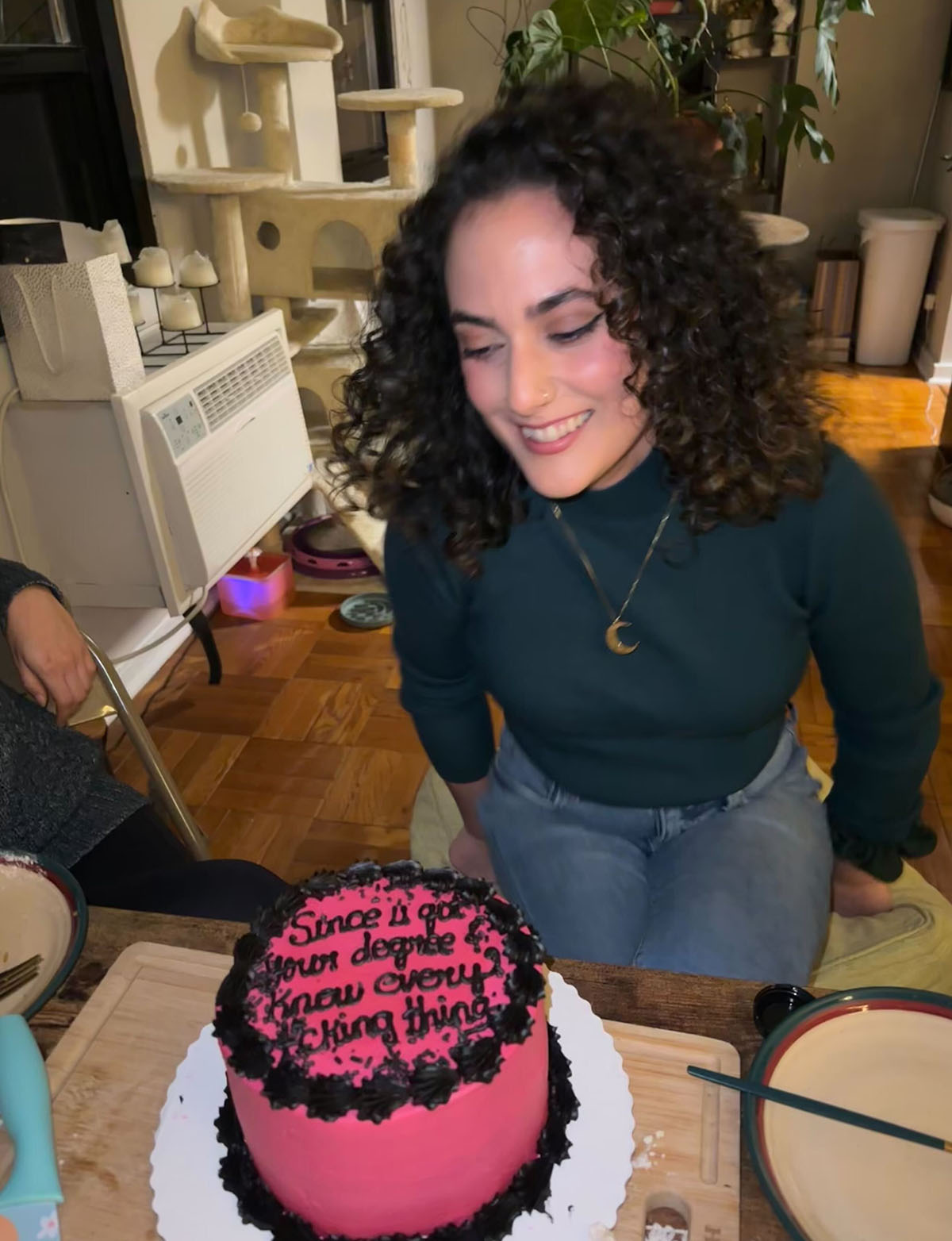
Too bad we couldn’t celebrate in person! You are owed: One awkward cheese. *The Rothfels Lab is not responsible for any baked goods profanity. - We miss you David!! (11/14/2024)
Rothfels Lab stalwart and apomixis/xeric fern enthusiast, David Adelhelm, has left us for sunnier and more lucrative pastures—we miss you David! Unfortunately, photos of our good-bye bash were lost in an inexplicable accident, so we will have to settle with these few images as homage to David’s many contributions to the lab.

Every Crown of Glory has its story (stories)–we miss David for each one. 
This photo sums up a lot of David. 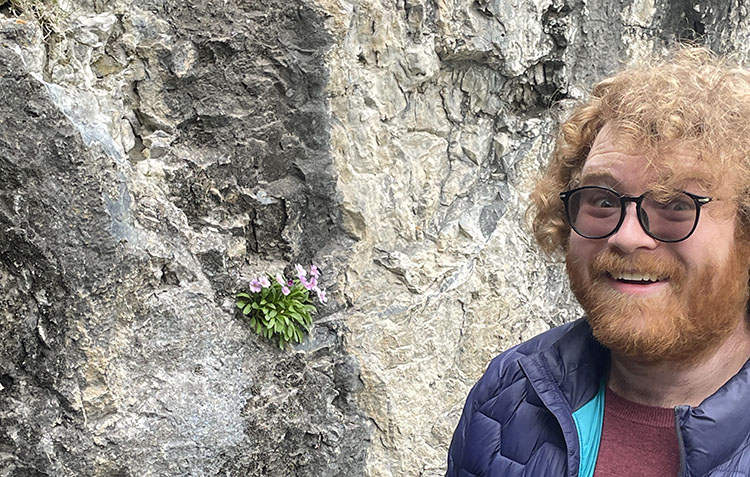
Ok, it’s not a xeric-adapted cliff-dwelling *fern*, but it’s still pretty cool. 
David and Myriopteris in their natural habitat. 
Happy trails!!! - Foray 2024: Ephraim Canyon and the Wasatch Plateau (9/11/2024)
For this year’s Intermountain Botanical Foray we headed to Ephraim Canyon and the Wasatch Plateau in July to explore a range of ecosystems up to 11,000 ft – it was a blast!
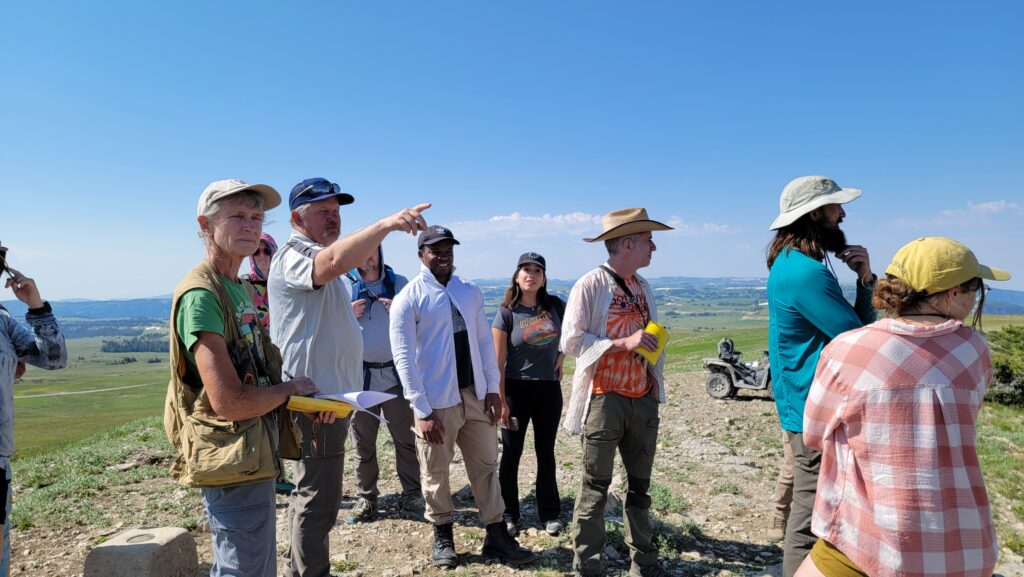
We stayed at the Great Basin Station, where some of the first watershed research in the world was conducted. Highlights include diverse wildflower meadows, snowmelt communities, and calcareous mountaintop specialists. Thank you to everyone who participated, and especially to Allan and Richard Stevens for their knowledge of the local ecosystems and Station history. We are also grateful for the support of the Utah Native Plant Society and the National Science Foundation.
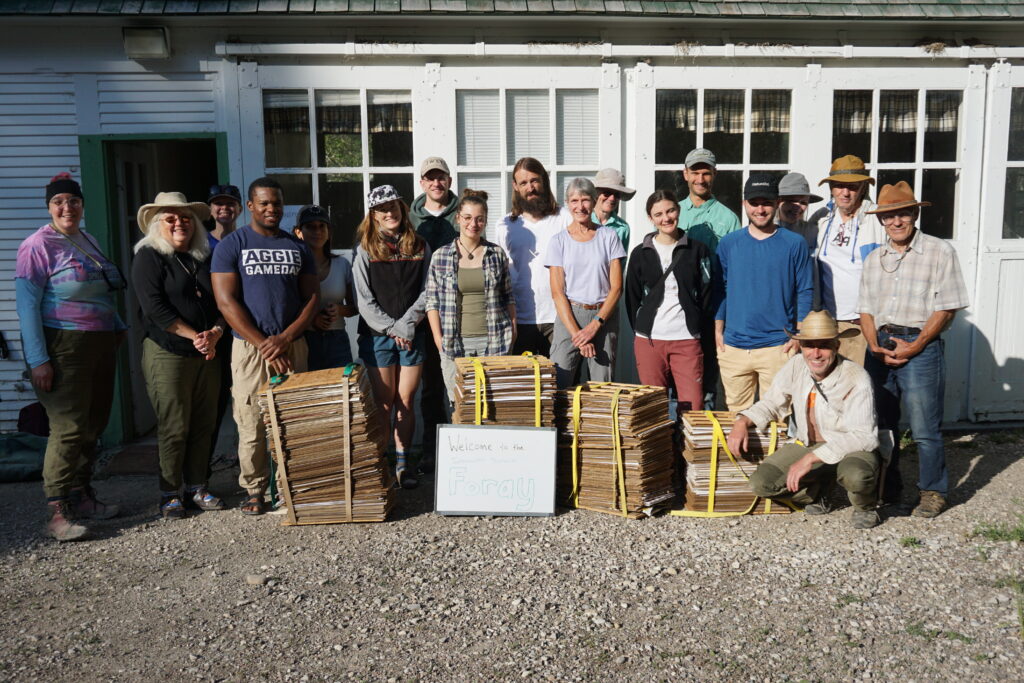
Here are some botanical highlights:

[Townsendia montana, an adorable acaulescent species.]

[Triglochin palustris – almost overlooked, but luckily an Erythranthe drew our attention to the stream bank!]

[Silene petersonii]

[A surprise Botrychium, perhaps Botrychium tunux!]
Three days wasn’t anywhere near enough time to see everything, but we tried! Check out our iNaturalist project here.
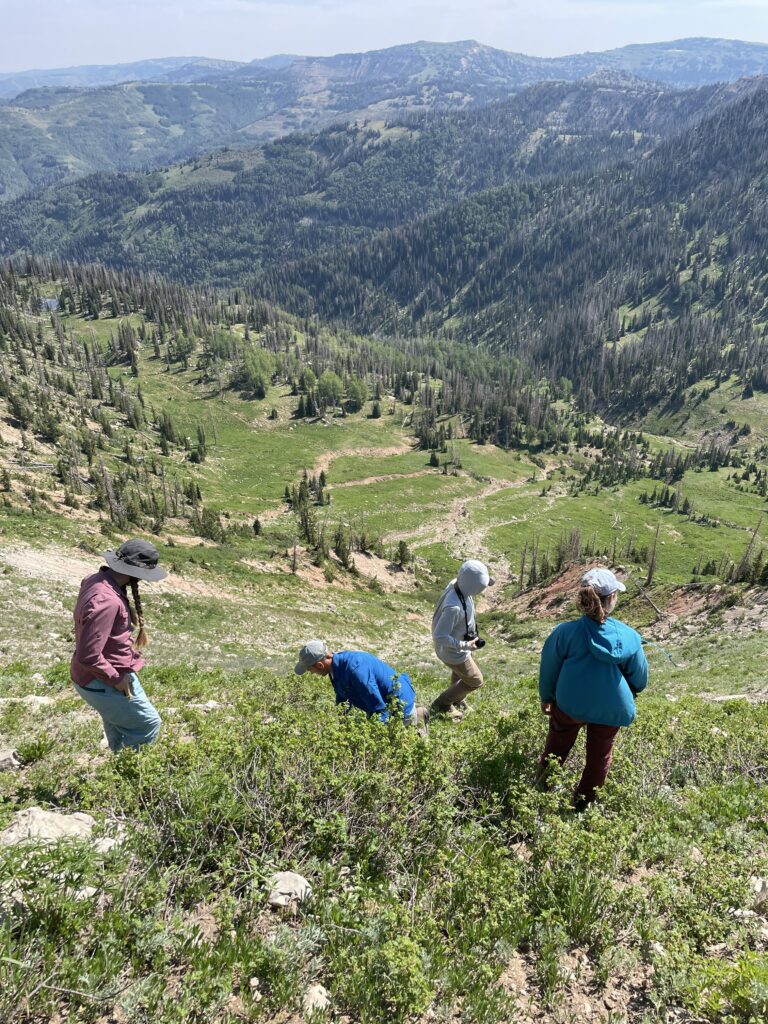
- We’re on N(U)PR! (8/2/2024)
Foray on the Radio
Ryan Helcoski and his partner EV joined the Intermountain Botanical Foray this year and produced a cool piece on our adventures for Utah Public Radio! I hate hearing my recorded voice and yet I actually enjoyed listening to this–a real testament to Ryan’s interview and production skill (and to how intrinsically fun the Foray is?).
https://www.upr.org/science/2024-07-23/utah-botanists-and-plant-hobbyists-gather-in-ephraim-to-build-community
- Ferns and Bomarea galore in Peru (5/2/2024)
Ptremendous Ptropical Pteridology
In late March Carl and Julia joined Carrie for some botanical collecting in the Andes of Peru – what an adventure!
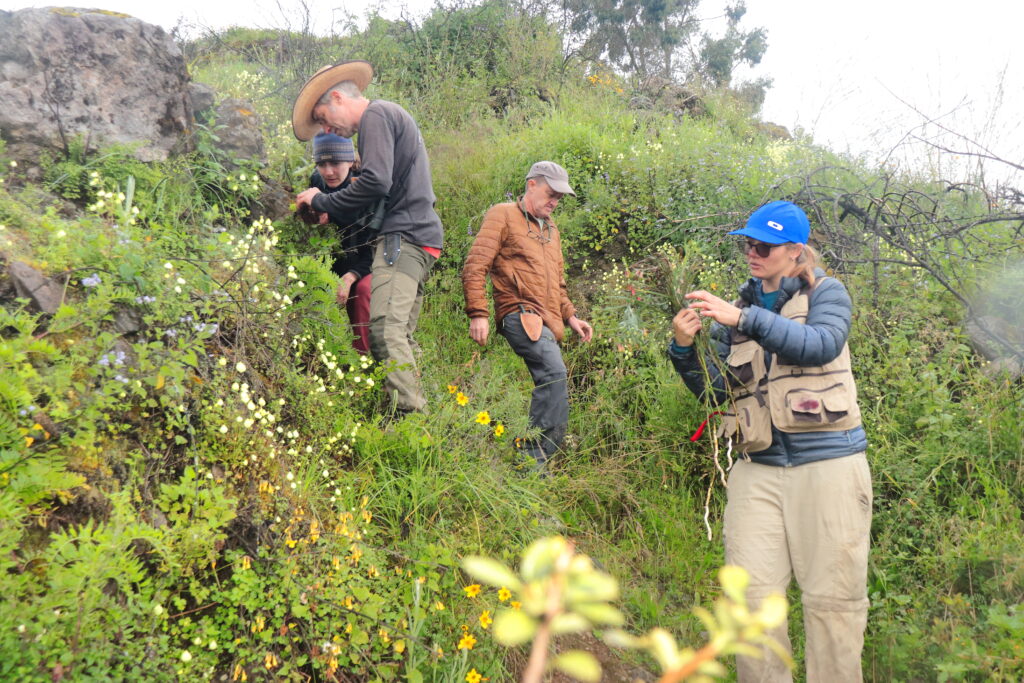
Carrie organized the trip and was taking some time for fieldwork before the fall, when she will be very busy in her new position at at the University of Washington/Burke Museum! Carrie works primarily with the monocot genus Bomarea (Alstroemeriaceae) which has a lot of diversity across Central and South America. Even we fern-folk have to admit Bomarea is quite beautiful! So the trip had a dual focus of Bomarea and ferns (especially Cystopteris and cheilanthoid ferns).
After flying in to Lima, meeting up with Carrie and Fernando Alzate (also a Bomarea fan; Universidad de Antioquia, Colombia), we headed a few hours east into the mountains for the first part of the trip. As we drove away from the foggy coast, we were struck by the dry climate. But as we climbed into the mountains, the scenery got greener and greener. We met up with a fantastic Peruvian botanist, Paúl González, in the mountain town of Canta (2800m elevation). We spent a few days exploring the mountains in that area – there were Bomarea, ferns, and hummingbirds galore!
Almost immediately after getting to Canta, we saw the first three ferns of the trip on a rock wall – Pleopeltis, Equisetum bogatense, and Cystopteris fragilis!
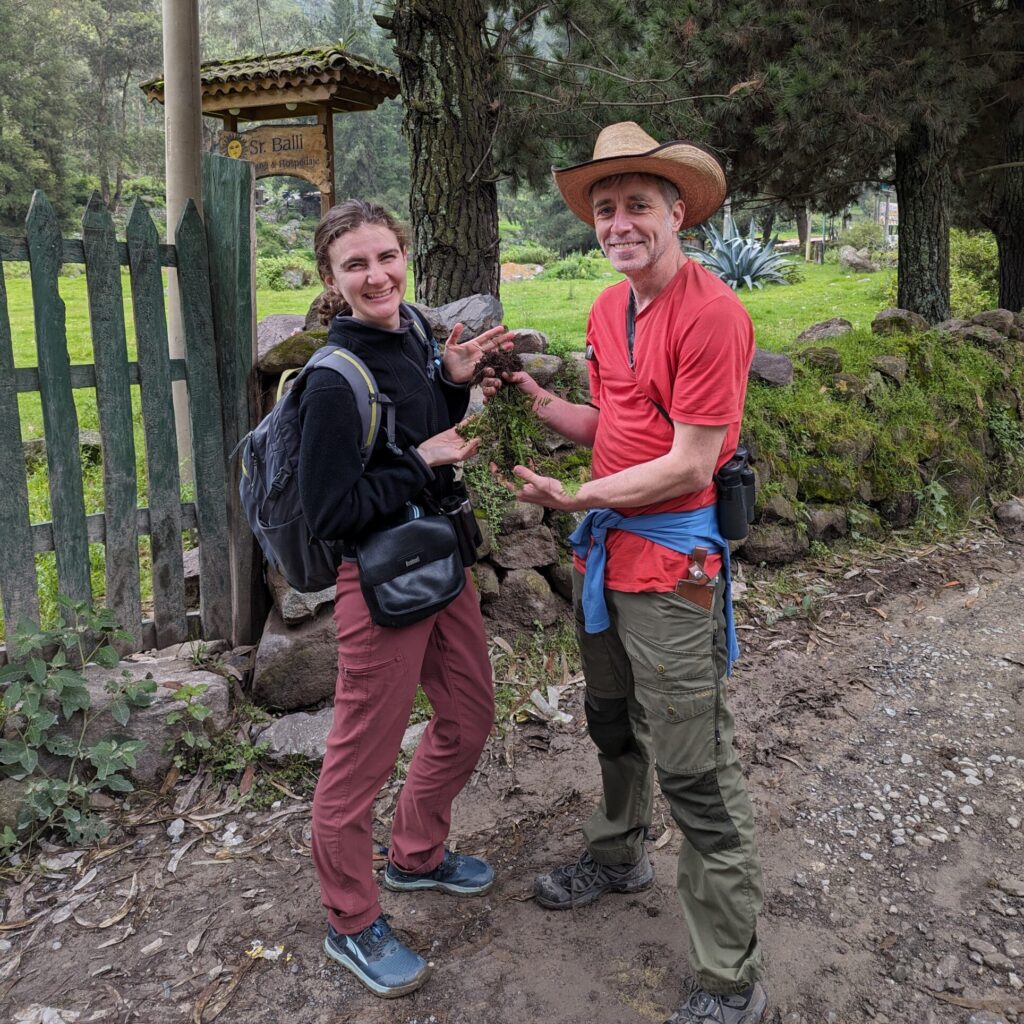
Julia, Cystopteris fragilis, and Carl A literal and figurative high point on our Canta explorations was at 4200m – some of us were feeling a little woozy! But it was absolutely worth it, as we made it up to a rock field filled with the stunning Bomarea longistylus.
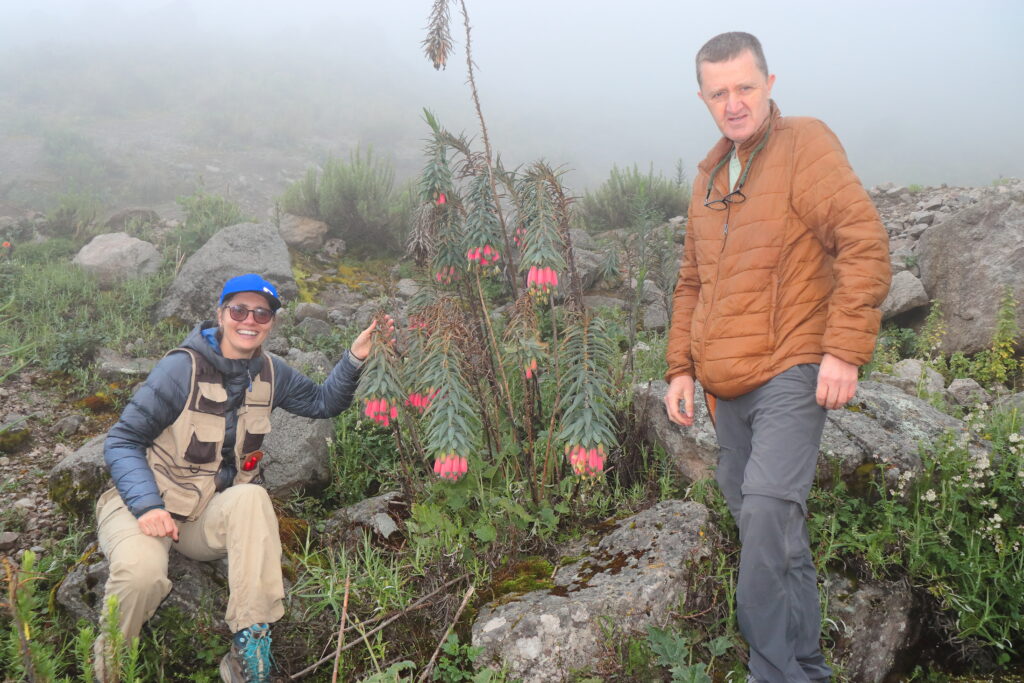
Carrie, Bomarea longistyla, and Fernando Paúl is an amazing photographer and took these stunning botanical shots. He’d rig up a piece of black velvet as the background, and hang/hold the plants a foot or so in front so the fabric wouldn’t be in focus.

Pellea ternifolia 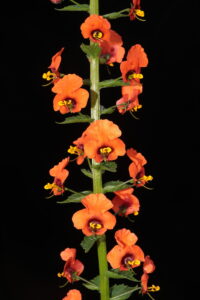
Alonsoa meridionalis 
Bomarea parvifolia – look at that underground storage organ! 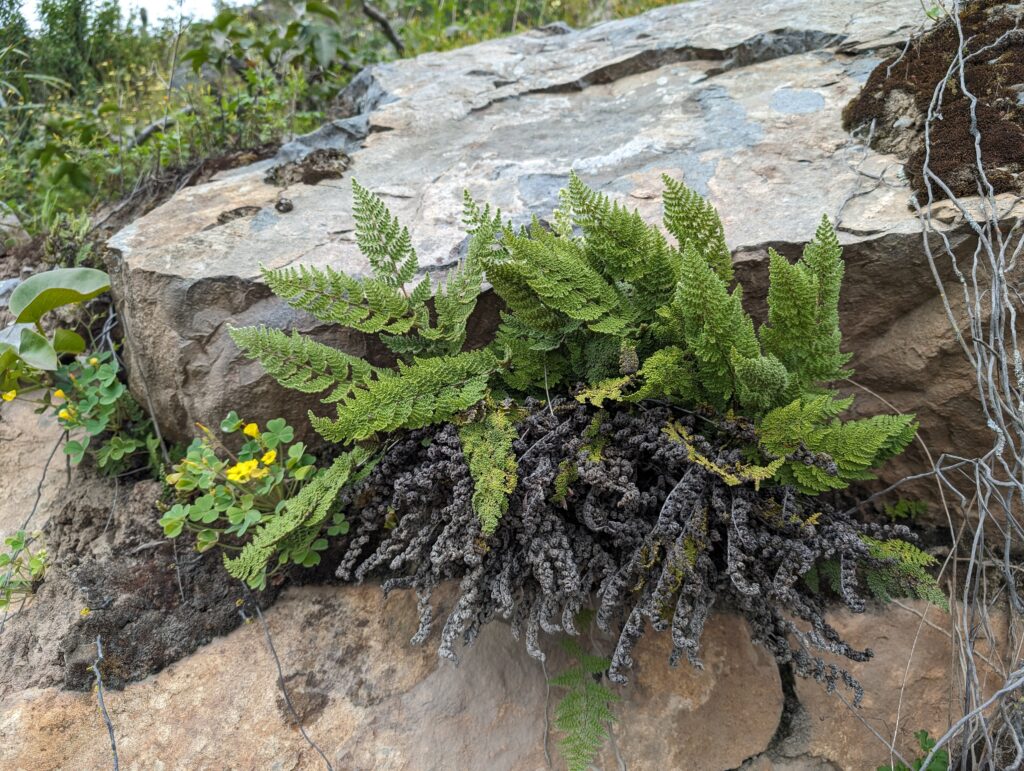
Myriopteris myriophylla in its element. 


The Canta team: Fernando, Carl, Julia, Paúl, Carrie After an amazing few days, it was time to say goodbye to Paúl and Fernando. We headed off to Cusco, where we met up with Lucero Alfaro, a wonderful local botanist who was indispensable as we traveled between different towns to see different ecosystems.
Our first afternoon we visited an archeological site called the Temple of the Moon just outside of Cusco – what an amazing combination of history and botany! The incredibly skilled Incan stonemasons hewed giant blocks out of rock outcroppings, and those same outcroppings are rich with all sorts of plants, including (luckily for us) many ferns (including Cystopteris) and Bomarea!

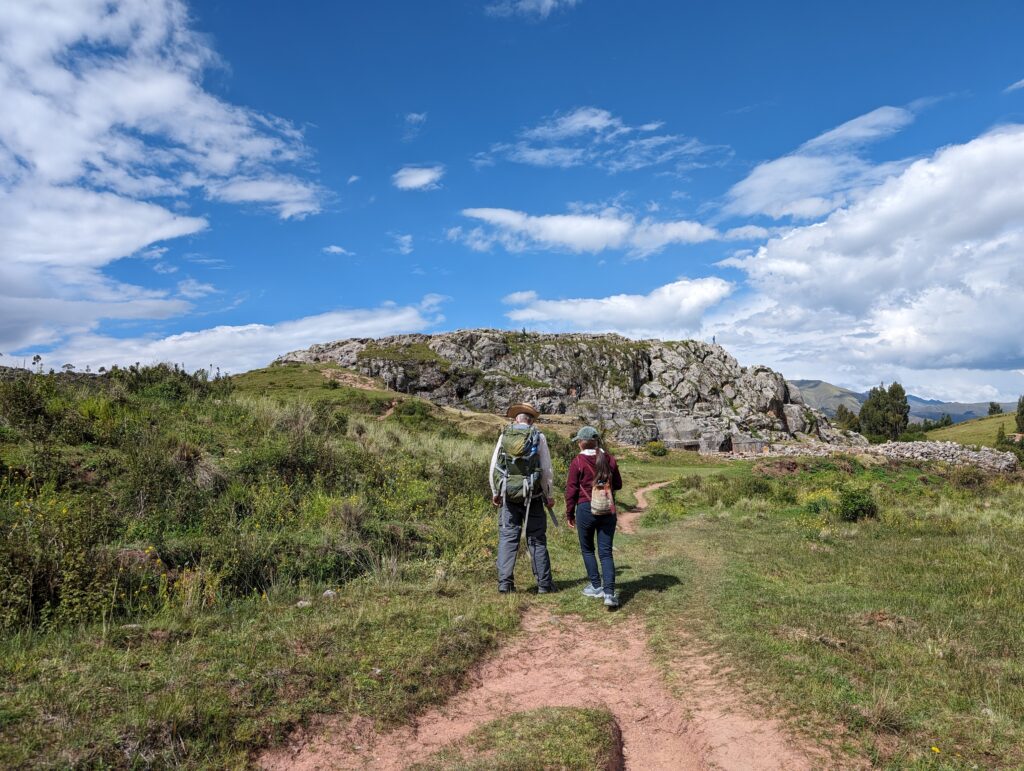
The Temple of the Moon (Cusco) is to the right of the rock outcrop. Carl and Lucero surveying for interesting plants. 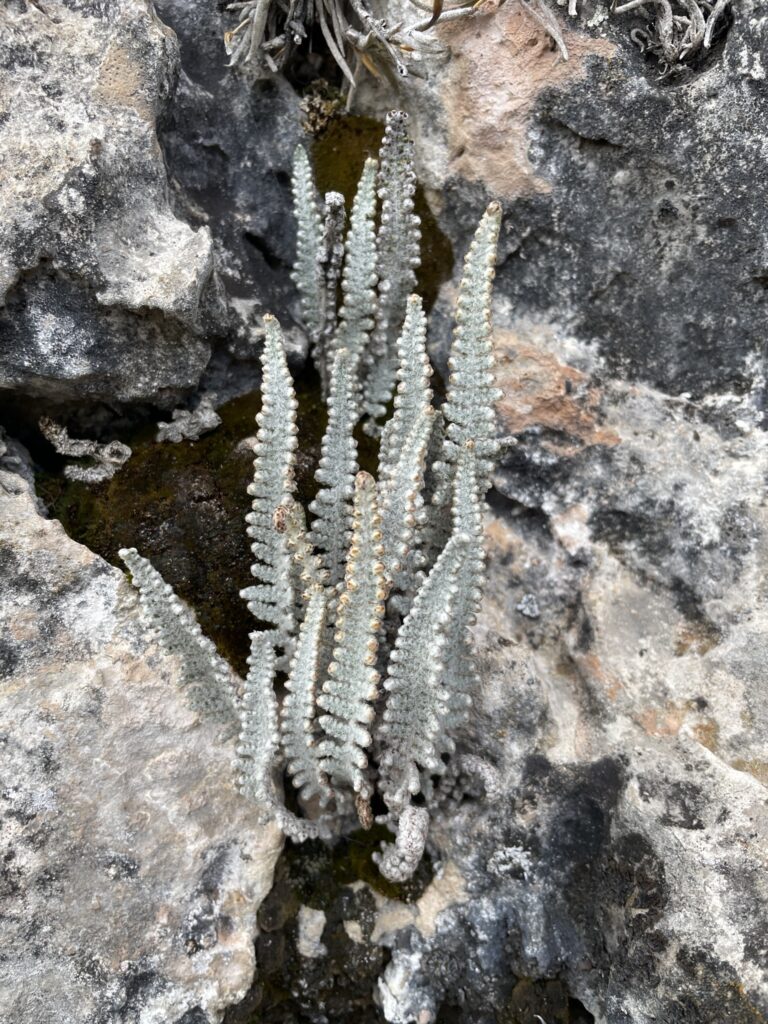
Cheilanthes scariosa 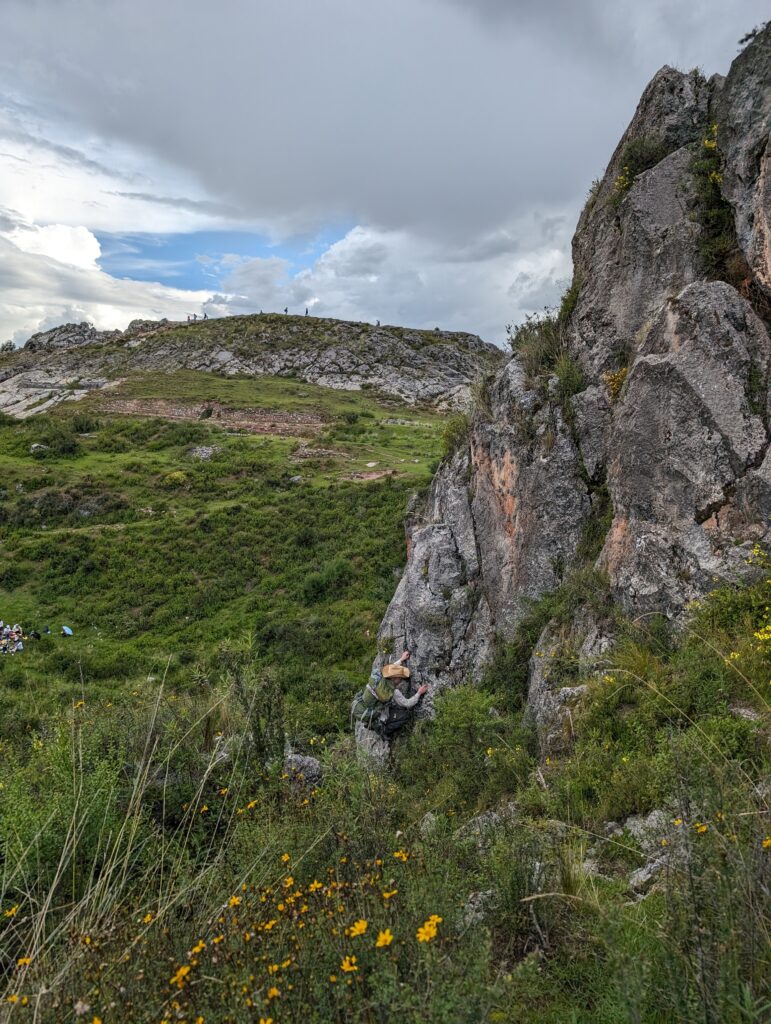
Carl investigating Cheilanthes scariosa to be continued…
Check out our iNaturalist project for all the neat things we observed!

- Mission Myriopteris … accomplished! (4/26/2024)
David (and to a lesser extent, me [carl]) has been on a mission. A mission to see the lone Myriopteris species of Cache County, the elusive M. gracilis. Nevermind that somehow it’s been iNat-observed in the county just shy of 40 times, making it one of the most-observed species that he (and I) have yet to see AND it’s a cheilanthoid at that…
So we took PIP (“plant identification practice”, a weekly Intermountain Herbarium open house) to the field this week to see if we could put an end to this foolishness.
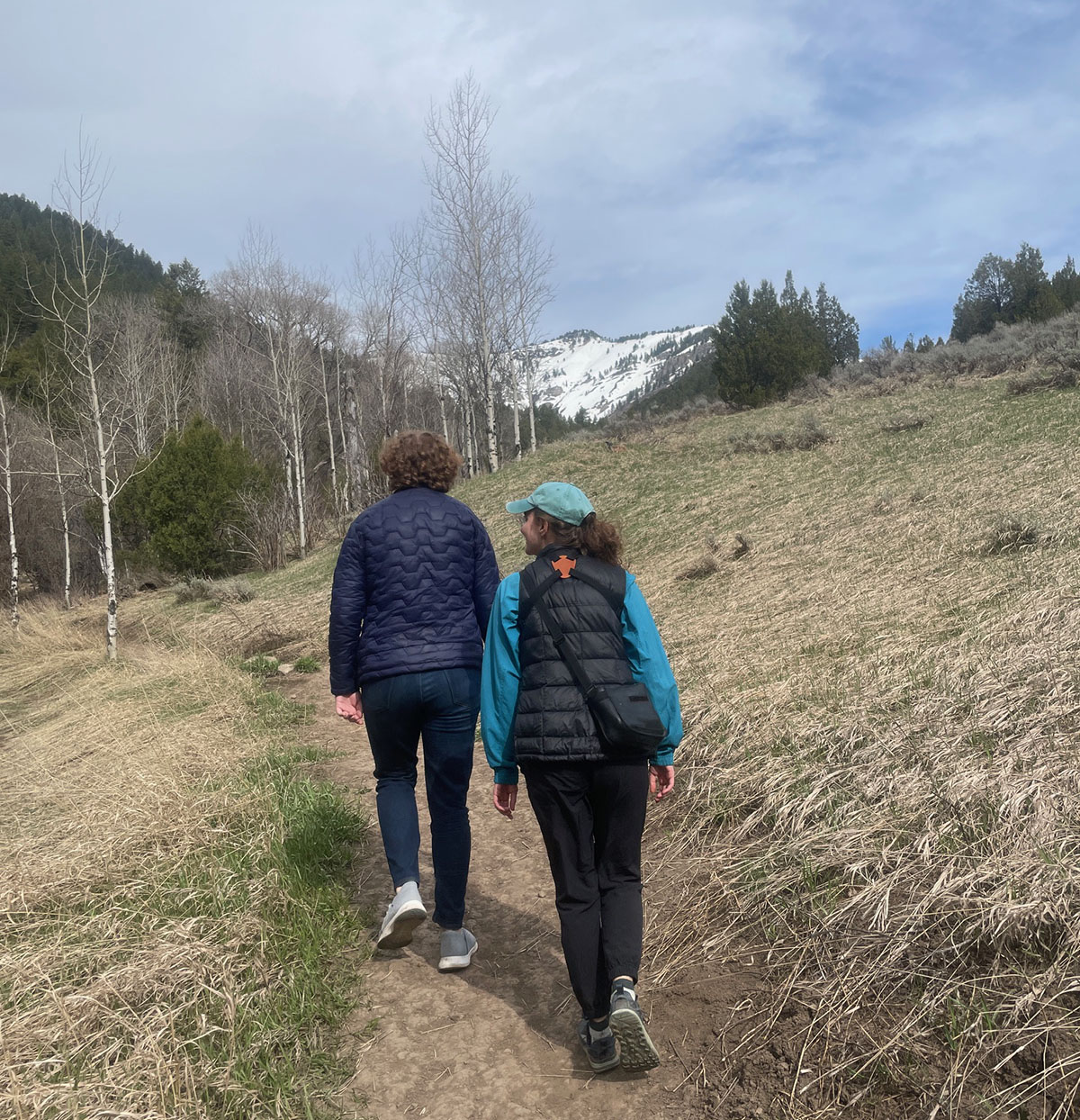
Before we realized that, obvi, we should be looking for Myriopteris, we started a little too high (Wood Camp), which was gorgeous but largely flower-free. 
A quite frankly stunning sphere of Physaria cf acutifolia. 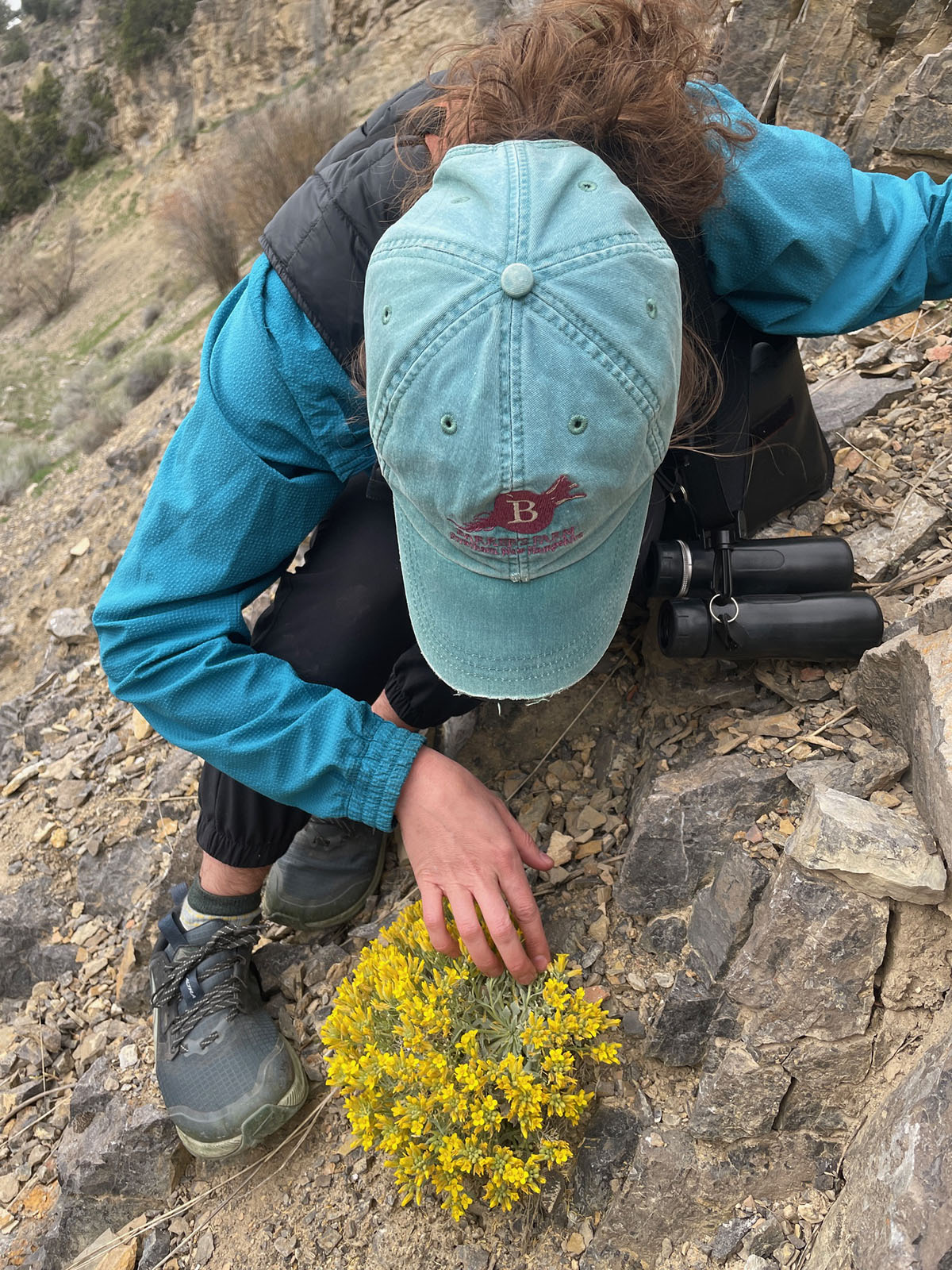
Botany action shot: Julia and the Physaria. 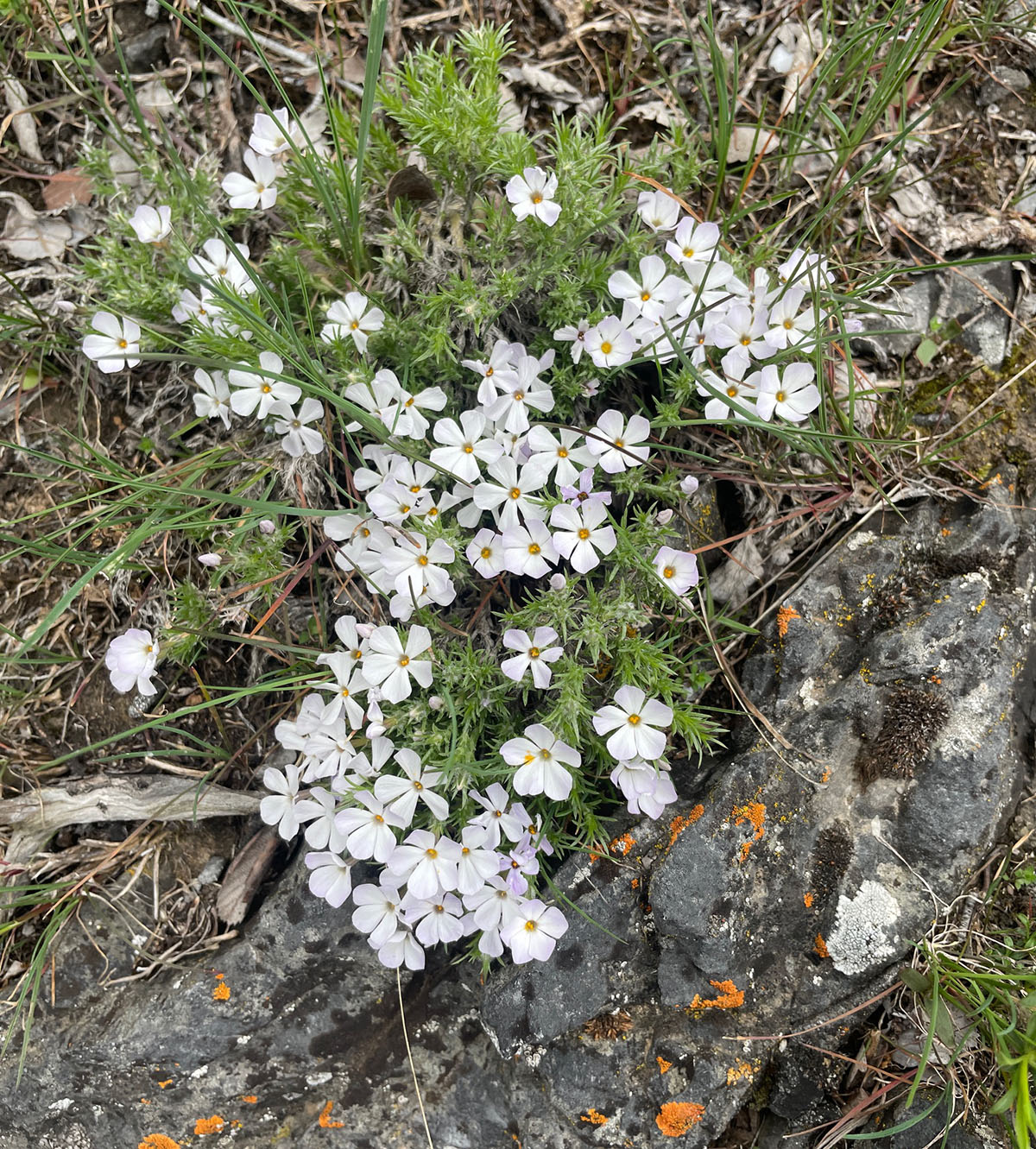
Phlox, looking Phloxy. 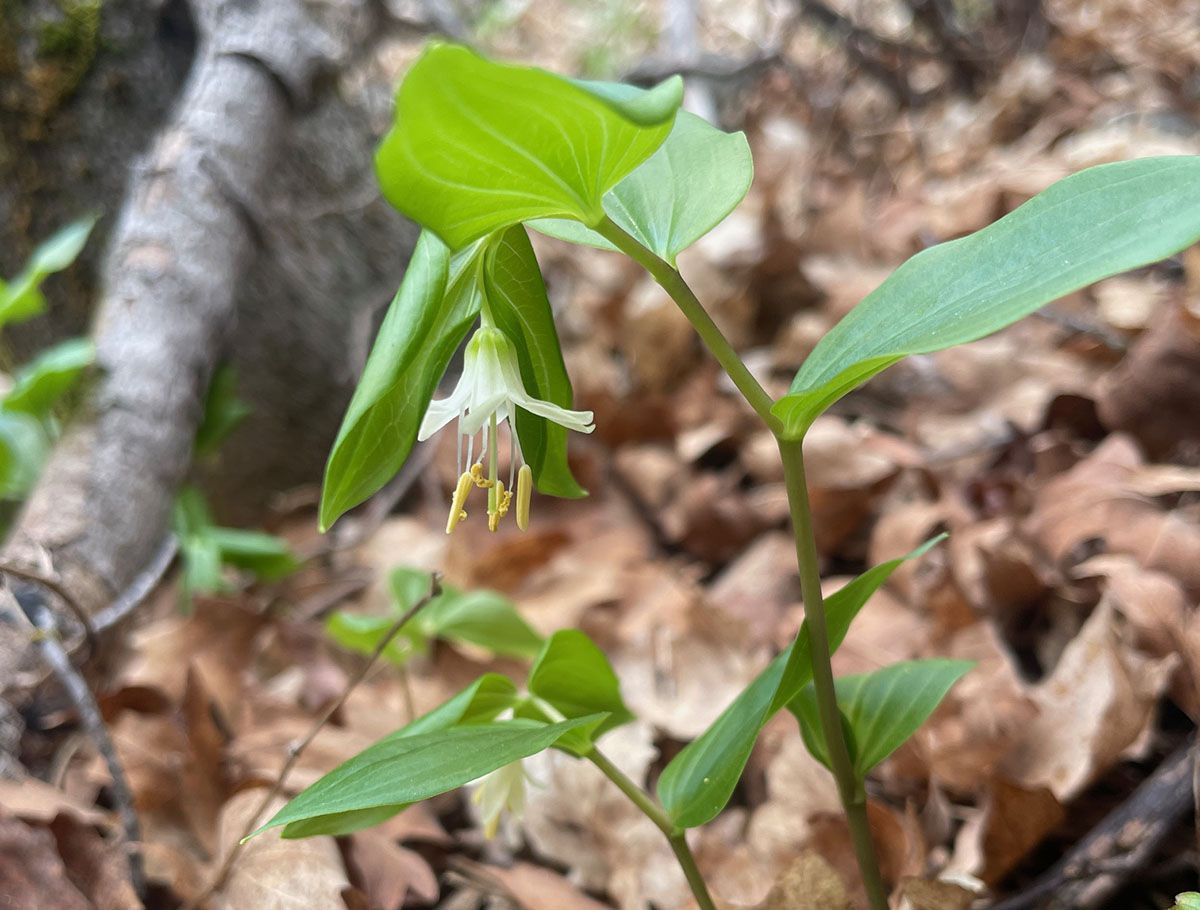
A little Prosartes to liven up the understory. 
A clear Boechera retrofracta x pendulina x exilis x stricta x microphylla. 
Ribes cereum. Some day I will learn to ID Ribes. 
Mertensia oblongifolia put on a good show. 
The legendary Primula maguirei, Logan Canyon icon. I mean, wow. For a non-fern it represents. 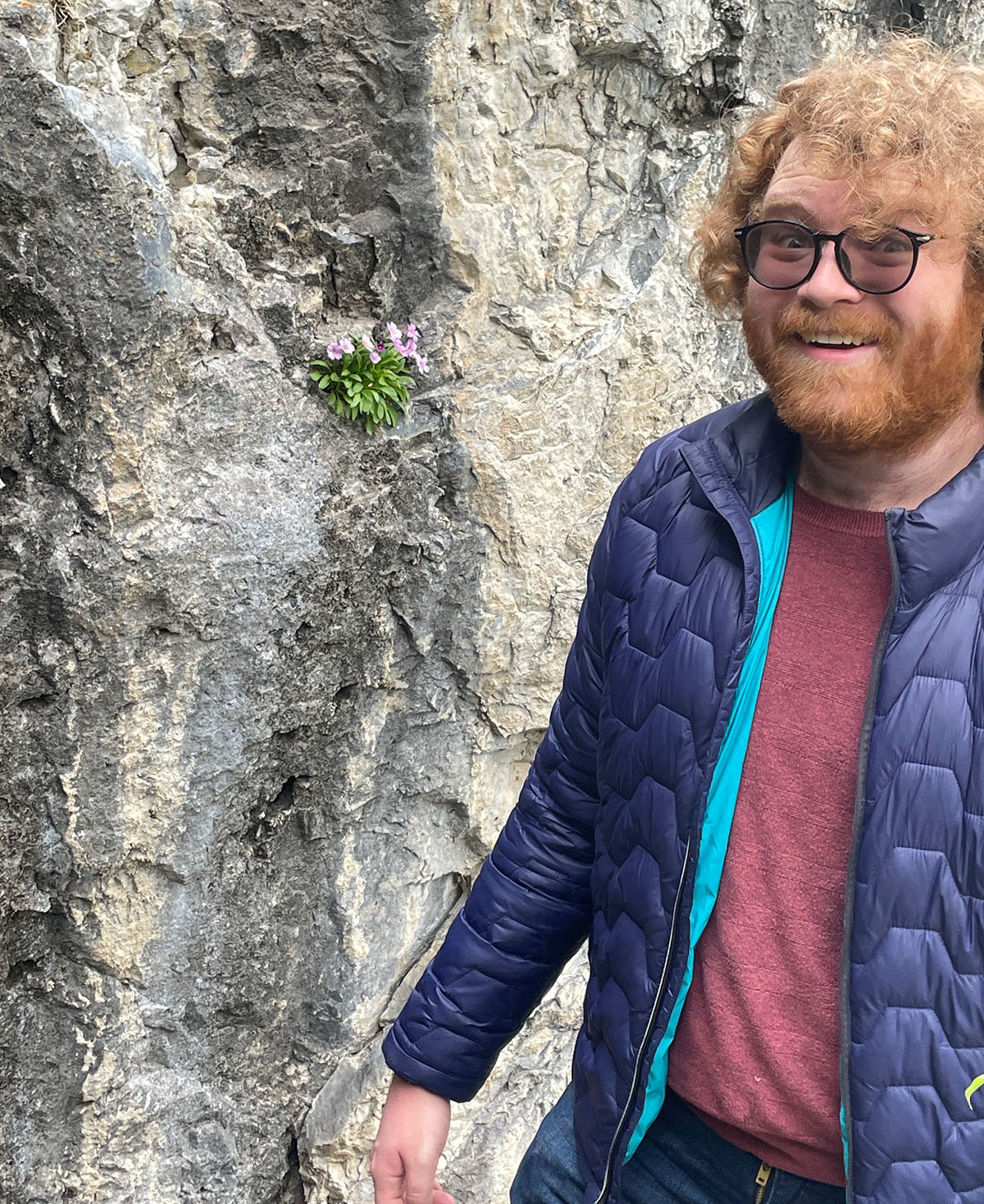
If you think David is excited here, imagine what he was like when we found the Myriopteris! Spoiler alert, I tragically didn’t get a picture of that. 
At long last, the star of the show, Myriopteris feei! Mission accomplished. 
A scaly abaxial close-up, for any of you skeptics out there. - A (belated) Happy New Year from the Rothfels Lab! (2/13/2024)
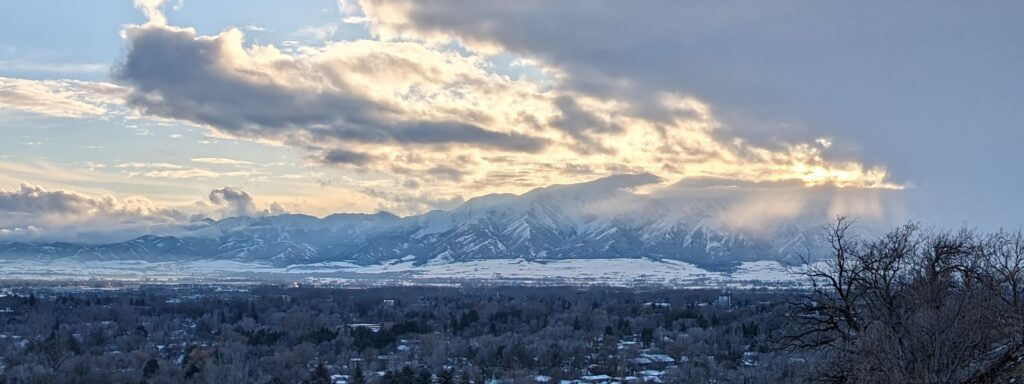
2023 was a big year! We collectively made more than 2800 iNaturalist observations, held the inaugural Intermountain Botanical Foray, and attended Botany2023 in Idaho.
As we move into 2024, we wanted to take a moment to congratulate lab members and lab alumni who are beginning new and exciting phases of their careers:
Lan Wei began her graduate studies with Erika Edwards at Yale University.
Forrest Freund started as a field biologist with the BLM in Redding, CA.
Jenna Ekwealor began in Jan 2024 as an Assistant Professor in the Department of Biology at San Francisco State University.
Carrie Tribble will be taking a faculty and curator position at the University of Washington Department of Biology and the Burke Museum in Fall of 2024.
Joyce Onyenedum is now Assistant Professor of Environmental Studies at New York University.

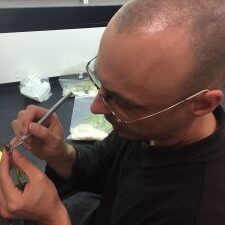
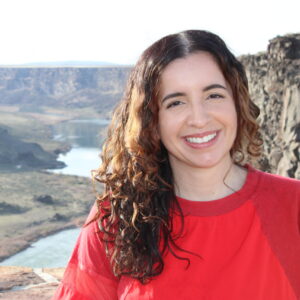
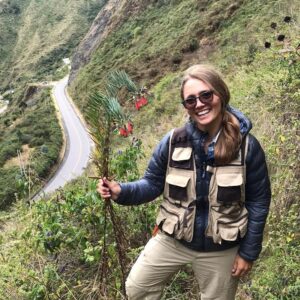

Congratulations Lan, Forrest, Jenna, Carrie, and Joyce!
We can’t wait to see what adventures everyone gets up to this year.
- Pumpkin Carving–We’re #2, we’re #2! (11/7/2023)
Pumpkin Carving Contest 2023
The Rothworth and Rushfels labs, Pumpkin Carving Champions Halloween 2022, sought to defend our crown (aka creepy little stuffed devil gnome thing), but were narrowly bested by the shark tadpoles of the WoLab. Well met, WoLab! Nevertheless, multiple people, who may or may not be Rothworth/Rushfels lab members, confided that our “Terrifying Notifications” jack-o-lanterns were a fan favorite.
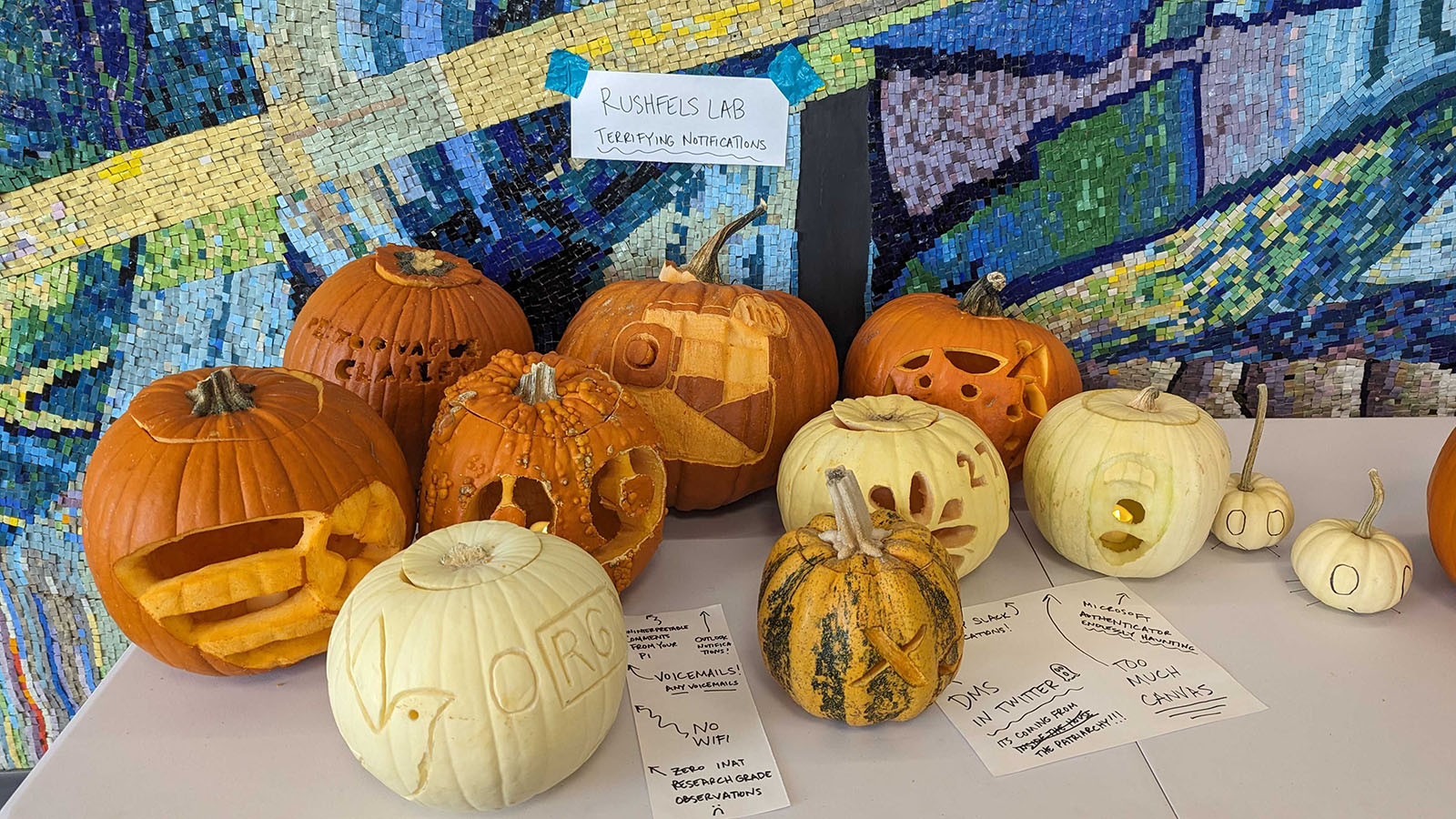
The explanatory signs really tie it all together. 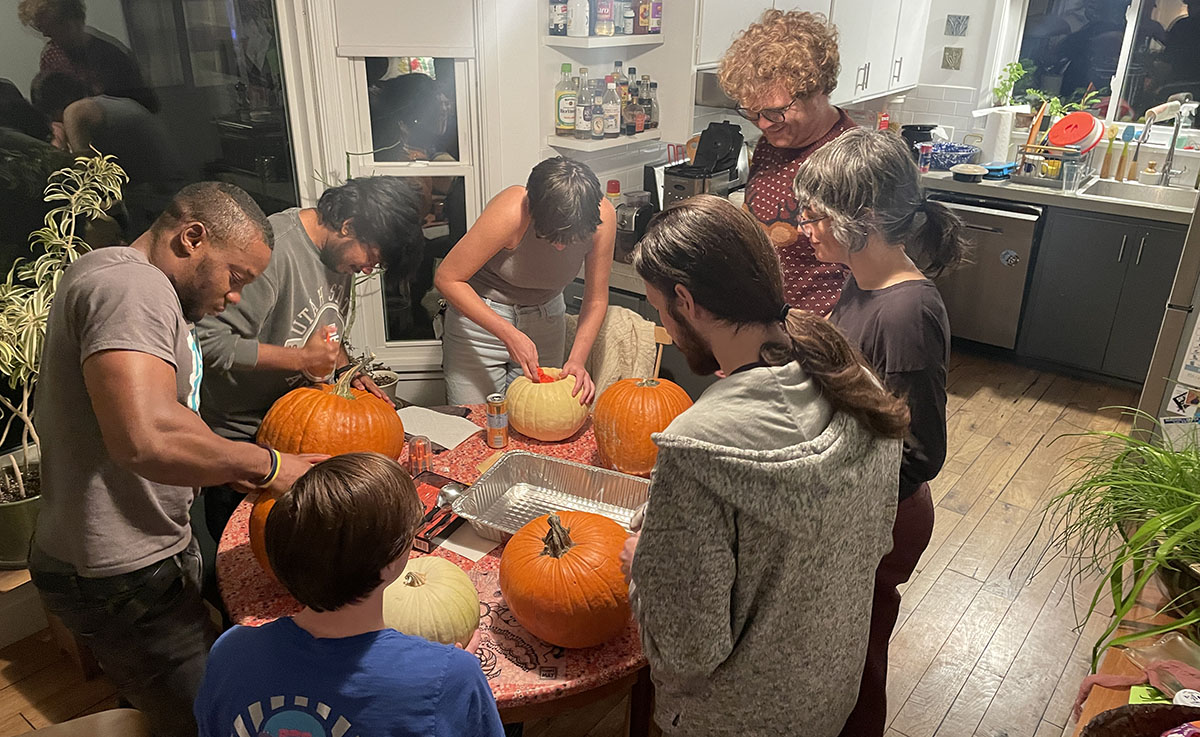
Artists at work 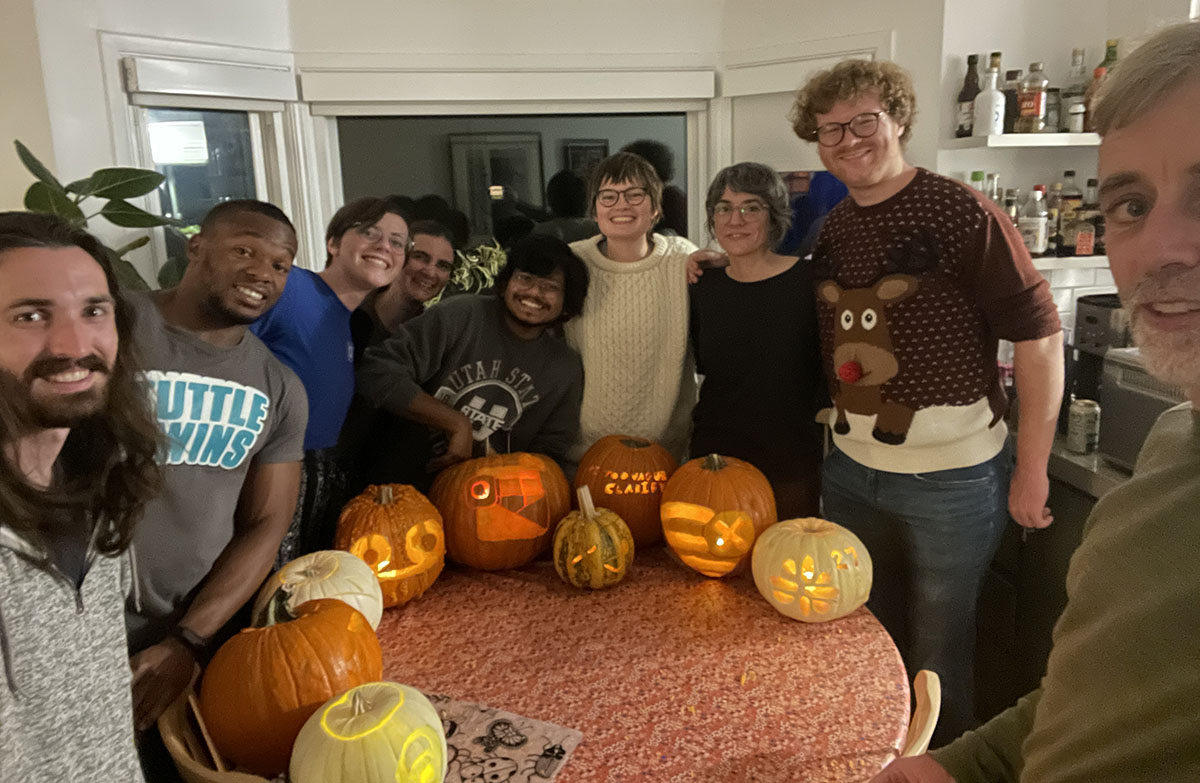
yesssss 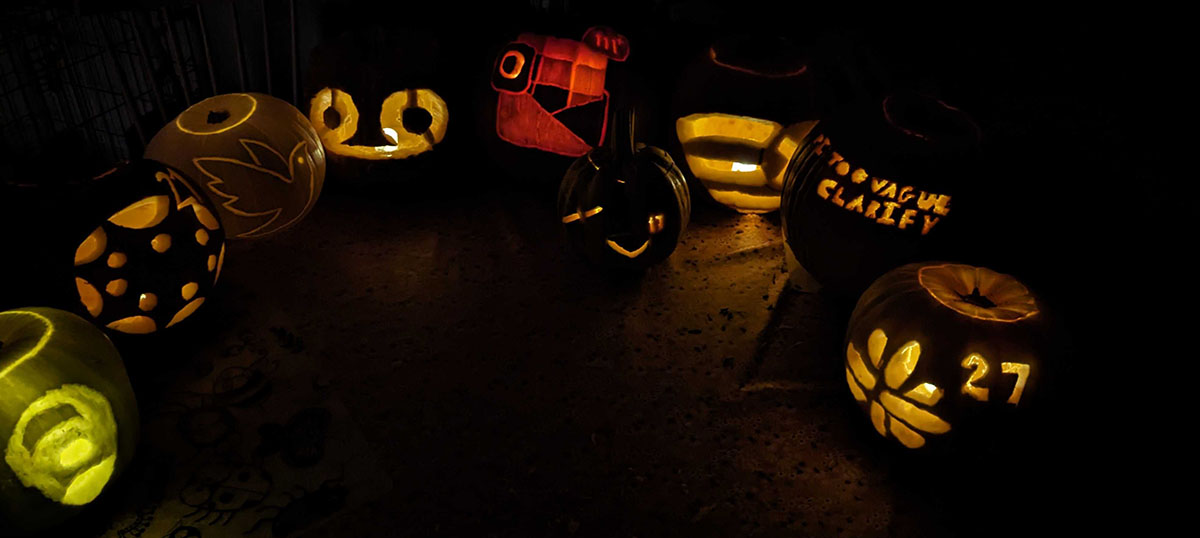
spoooky…. (so many notifications!) - Spooky Plants at USU’s Science Unwrapped Outreach Event (10/9/2023)
We had a great time Friday night sharing some spooky plants with attendees of USU’s monthly Science Unwrapped outreach event. A huge thank-you to the USU teaching greenhouse which let us borrow all these awesome plants!
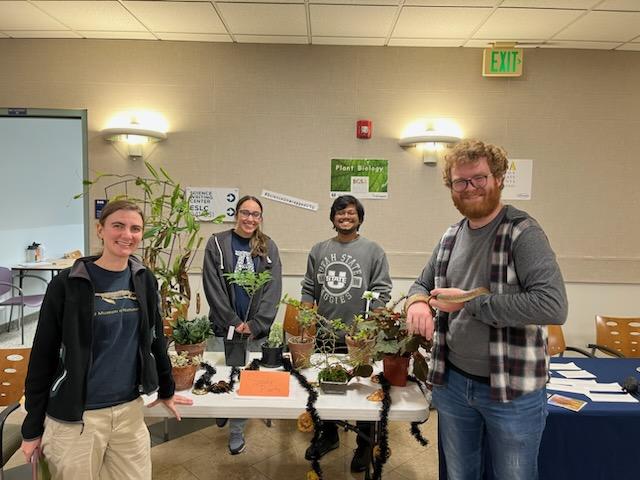
Pictured: Julia (Rothfels lab), Gabbie (Rushworth lab), Kallol (Rushworth lab), David (Rothfels lab), bonus Children’s python (Antaresia childreni)
Some favorites were Euphorbia milii (crown of thorns), Amorphophallus (corpse flower genus), and of course the carnivorous plants including both Nepenthes and Sarracenia, which are in different orders and each evolved pitcher traps independently.
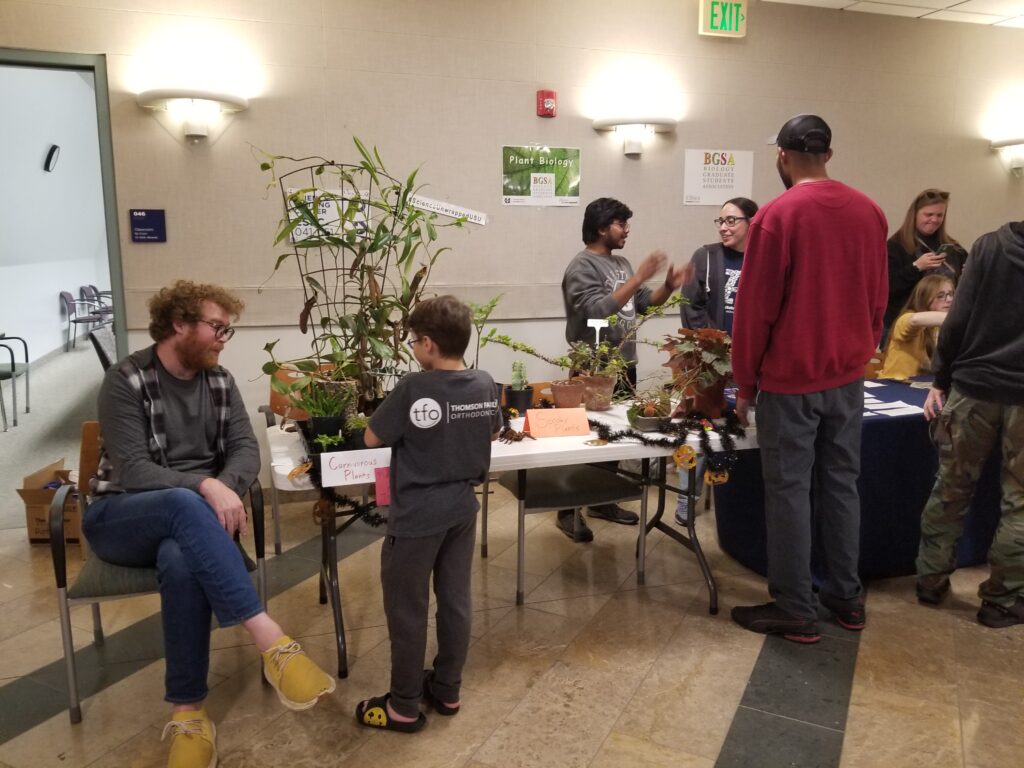
- The Long-Awaited Southwest Utah Trip Blog Post, May 23-29 (10/4/2023)
The Long-Awaited Southwest Utah Blog Post, May 23-29
Post by David Adelhelm
Our first winter in Logan, Utah was quite long, with the first snow coming in mid-October and lasting all the way to mid-to-late April. For those of us accustomed to warmer climates and shorter winters, this led to some intense cabin fever. By January, we (the grad students) had decided that the moment the weather let up, we were getting some time out in the field. With that goal in mind the three of us planned, budgeted, and wrote two different grant applications to fund some fieldwork over the summer, and both were funded!
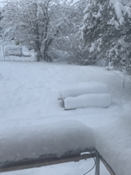
Figure 1 – The Scenery in Logan as of April 5th, 2023. Spot the picnic table?
The first of these grants was written to help further the collections of the Intermountain Herbarium (UTC) here at USU, with a focus on under-sampled counties of Utah, primarily the southwestern three counties: Washington, Iron, and Kane. With our funding and permits acquired, we set our departure date for May 23rd and made our site reservations. For our locations, we chose: Snow Canyon State Park, Pine Valley, and Three Peaks Recreation Area, with two nights in each campsite. Our traveling crew consisted of a whopping 11 people: the three C’s (Carl, Cathy, and Conrad), the Ekwealor family (Jenna, Somi and Leo), the grad students (David, Julia, Kallol, and Chinedum), and our intrepid collections manager, Kris Valles.
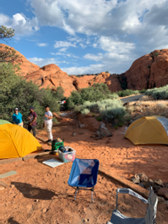
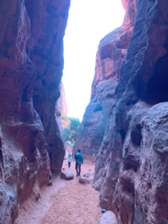
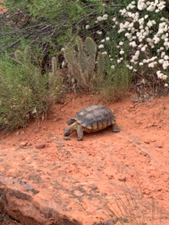
Figure 2 – Some shots from Snow Canyon State Park.
The camping was a blast, with some of our members being first time campers – congratulations on surviving Kallol and Chinedum! Given the size of our party, we kept mainly to popular trails, using our one full day in the Canyon to cover much of the Hidden Pinyon and connected trails. On our second day, we visited Snow Canyon Sand Dunes and Jenny’s Canyon, where we all saw a solitary desert tortoise.
From there, we departed for Pine Valley, within the Dixie National Forest. Some of us were fortunate enough to stop by the Gunlock Falls on the way, which were experiencing historic high-water levels due to the record snowfall that winter. Pine Valley presented us with a complete shift in environment, from dry desert to high elevation forest. And with that environment shift came a shift in observable plants too – Equisetum and Cystopteris galore (and some flowering plants too)! Warm days and unexpectedly cold nights were the norm here, so it made sense we settled in for s’mores after a long day spent covering the nearby trails.
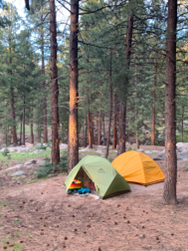
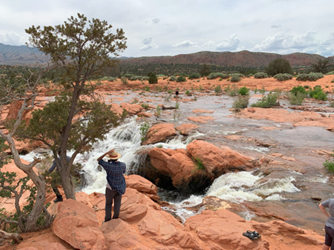
Figure 3 – The scene from Pine Valley and a shot from Gunlock Falls.
After Pine Valley, all that remained was Three Peaks, near Cedar City, Utah. The drive was less eventful than the Pine Valley drive but the campsite was so windy we nearly lost our tents on the first night! On our second day in the campsite, we met with Cedar City local and faculty of Southern Utah University, Matt Ogburn, who gave us a great crash course on the local flora. Thanks Matt!
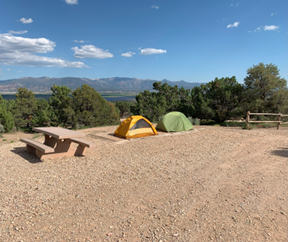
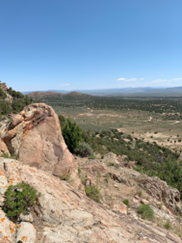
Figure 4 – The final campsite and some scenery from the Three Peaks trail.
All in all, the first Rothfels + Rushworth labs field trip was a resounding success and a great way to introduce us to the Utahn flora! We’ll be cataloging our collections in the herbarium for most of the school year but according to our iNaturalist project made for the trip, we observed at least 215 species. Check out all the cool plants we saw on our iNaturalist Project below:
